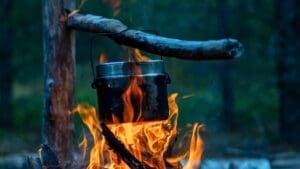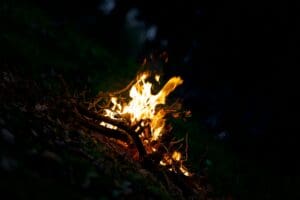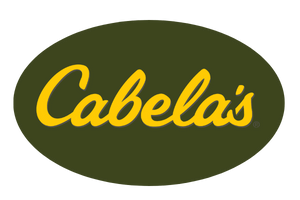Why Bushcraft Isn’t About Gear
Walk into any outdoor outfitter or scroll through an online survival store, and you’ll see an overwhelming array of high-end knives, fire starters, shelters, cooking systems, and tactical gadgets — each one promising a better, safer, more capable experience in the wild. Gear companies market confidence, convenience, and preparedness. But here’s the truth most seasoned woodsmen know: real bushcraft starts where the gear ends.
Bushcraft is about more than having the latest gear — it’s about understanding the land, using your senses, and developing timeless skills that don’t rely on batteries, buttons, or warranties. Good gear is useful. Great skills are essential. If you’re serious about the craft of wilderness living, you’ll quickly realize that your greatest tools aren’t made of steel or nylon — they’re the ones forged in practice, patience, and experience.
The Heart of Bushcraft
So what is bushcraft, really? At its core, bushcraft is the art of living well in the wilderness using natural materials, ancestral knowledge, and simple tools. It’s about working with the land, not against it. The aim isn’t to conquer nature, but to understand and coexist with it. In that way, bushcraft is less about “surviving” and more about thriving — responsibly, respectfully, and resourcefully.
WildFront teaches bushcraft through that very lens. Not as a commercialized checklist of tools, but as a way of thinking and interacting with the wild. Our founder, AJ Cote — a Métis survivalist and lifelong outdoorsman — often reminds students: “Your knife might get lost. Your firestarter might break. But your skills will follow you everywhere.”
The Gear Myth
Let’s be honest — gear is fun. Who doesn’t enjoy unboxing a new axe or strapping on a perfectly-packed rucksack? But there’s a danger in believing that gear alone makes you ready. Many beginners fall into the trap of equating purchases with preparedness. But gear is not a substitute for experience. It’s a support system — nothing more.
We’ve met folks who own custom knives but don’t know how to feather a stick. Others have state-of-the-art camp stoves but panic when their lighter fails. Without skill to back it up, gear becomes a liability. It adds weight to your pack but not strength to your mind.
Gear Breaks. Skills Don’t.
Ask any experienced backcountry traveler, and they’ll tell you — equipment fails. Blades dull. Saws break. Batteries die. Zippers split. The only thing you can always rely on is your ability to adapt. And adaptation doesn’t come from what you carry — it comes from what you know.
Bushcraft training prepares you for that. When your stove runs out of fuel, do you know how to cook over coals? When your tent rips, can you rig a tarp shelter from forest materials? When your filter cracks, can you find and purify water using natural methods? These are not hypotheticals. These are real-world scenarios that happen to real people — and the difference between stress and success is skill.
How Our Ancestors Did It
Before carbon steel knives and paracord bracelets, there were flint flakes and spruce root lashings. Before Gore-Tex, there were hides, woven fibers, and clever shelter placement. The people who came before us — First Nations communities, early trappers, voyageurs, and pioneers — didn’t wait for the latest catalog to drop. They worked with what the land gave them, and what they could create with their hands and minds.
AJ Cote’s Métis roots run deep through this philosophy. His ancestors trapped and traded across the rivers and forests of Canada with nothing but their knowledge, grit, and the few tools they could carry. That legacy lives on in WildFront’s approach: practical, tested, respectful of history, and rooted in the realities of the land.
Skills That Outlast Any Tool
To understand why bushcraft isn’t about gear, you have to understand what it is about. Here are some foundational bushcraft skills that require almost no equipment but provide maximum value in the wild:
- Shelter: Building a windproof, insulated shelter using sticks, leaves, bark, and snow teaches patience, awareness, and comfort with your environment.
- Firecraft: Knowing how to build and maintain a fire in rain, wind, or snow — whether with a ferro rod, bow drill, or friction fire — is a cornerstone of backcountry living.
- Water: Identifying safe sources, collecting runoff, boiling, filtering with natural elements, or building a solar still gives you freedom from dependence on tech.
- Navigation: Using the sun, stars, landforms, and natural signs to orient yourself gives you options when GPS fails.
- Foraging: Learning edible plants, berries, fungi, and roots specific to your region opens up new paths to nutrition and connection to your ecosystem.
- Tool Use: Using and maintaining a basic fixed-blade knife to carve, baton, notch, and craft is one of the most empowering skills to develop.
None of these require a truckload of gear. What they require is time, humility, and practice. And the payoff? Confidence, capability, and true readiness.
Start Simple, Grow Strong
New to bushcraft? Don’t let gear get in your way. Start with what you have. Use a kitchen knife to practice carving in your backyard. Build a simple tarp shelter and sleep outside. Learn to identify five wild plants in your region. Try lighting a fire in damp weather with one match and natural tinder. This is how you build the foundation.
As your skills grow, your gear choices will evolve too — not based on marketing hype, but based on real needs. You’ll choose tools because you understand their purpose, not because someone online said they’re “must-have.”
And when gear does fail — and it will — you won’t panic. You’ll improvise. You’ll adapt. And you’ll thrive.
Redefining “Prepared”
Preparedness isn’t about the biggest rucksack or the most expensive kit. It’s about knowledge, adaptability, and confidence. The best bushcrafters are the ones who know what to do when things go sideways — and that comes from practice, not purchases.
Think of it this way: gear is a backup plan. Your brain is the primary tool. When you train your brain to be calm, observant, and creative, every challenge becomes a puzzle instead of a problem.
10 Things You Can Learn Without Buying a Thing
- Build a debris shelter with natural materials.
- Carve a simple spoon, tent peg, or pot hook from a branch.
- Make natural cordage using bark or grass.
- Identify and test safe fire-starting tinders in your area.
- Cook a meal over an open fire using only sticks and stones.
- Map your local terrain using only natural navigation techniques.
- Find, collect, and boil water from a nearby stream or source.
- Practice tying and applying 5 essential knots.
- Track an animal by interpreting signs like prints and scat.
- Practice bushcraft routines in your backyard or local woods.
Each of these develops your awareness, strengthens your connection to the land, and sharpens your ability to act with clarity and confidence — no shopping required.
Final Thoughts: The Mindset of a Bushcrafter
At WildFront, we believe the wilderness doesn’t demand gear — it demands respect. It rewards the prepared, the patient, and the perceptive. And the more you practice bushcraft, the more you realize: your knife isn’t your security. Your skills are. Your gear isn’t your safety net. Your mindset is.
We’re not anti-gear — far from it. But we believe in gear earned through experience. When you’ve built a shelter from scratch, lit a fire with damp tinder, and purified water with nothing but the sun — you don’t need a gear list to feel ready. You are ready.
Learn the land. Sharpen your skills. Carry confidence, not clutter. That’s the WildFront way.
Whether you’re a beginner looking to ditch the fluff, or an experienced outdoorsperson ready to deepen your craft, we’re here to help guide that journey. Because the wild doesn’t care what you own — it cares what you know.
Bushcraft isn’t about gear. It’s about grit. Let’s go.








